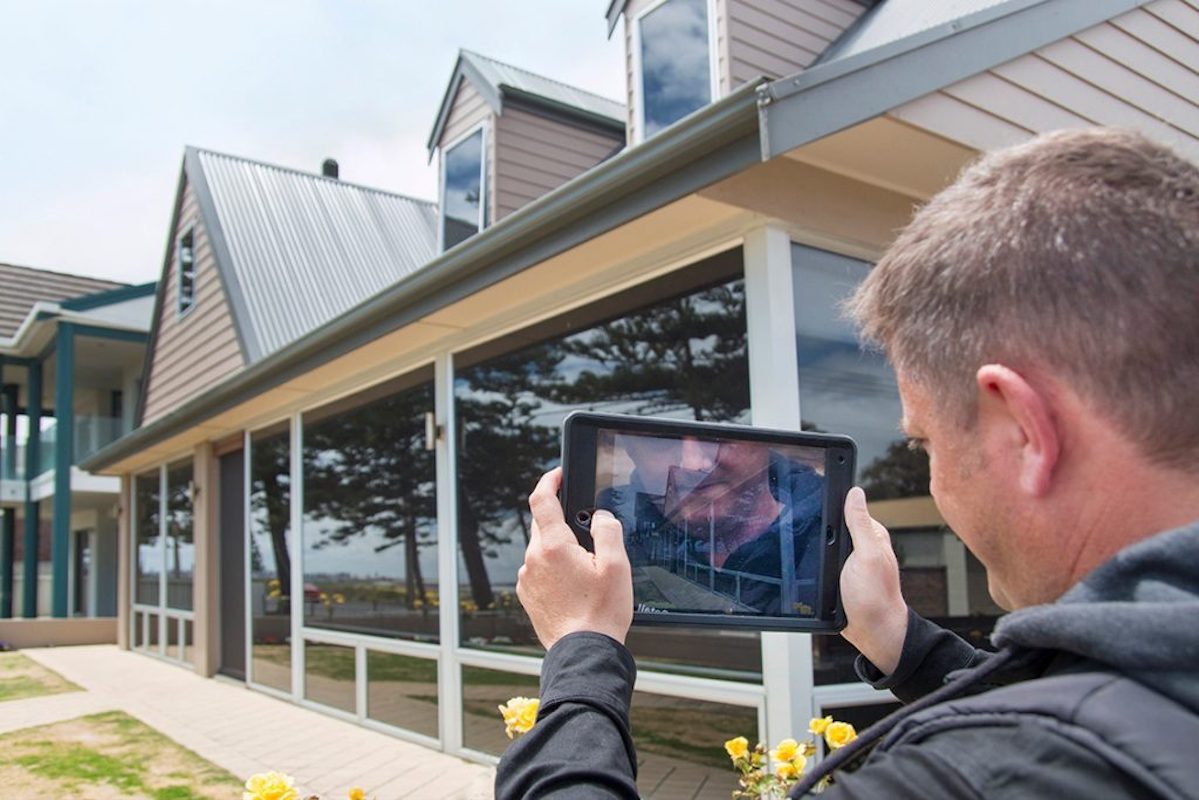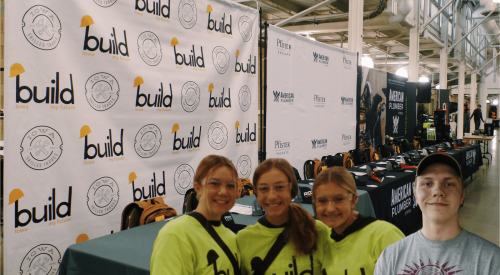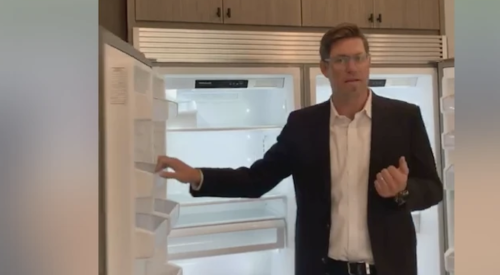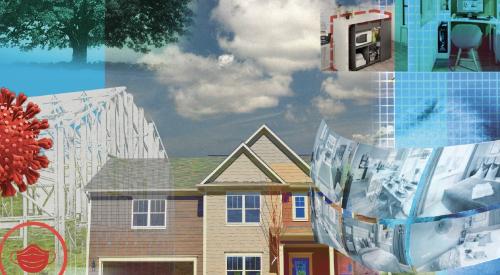A year ago, California HVAC contractor Dane Demicell was working with the officials in Pasco County, Fla., to roll out VuSpex, his startup app that enables and records virtual building inspections. “Getting a 65-year-old building inspector to use the technology was a challenge,” he says. “We were getting lots of pushback.”
Fast-forward to late March 2020 and the onset of stay-at-home orders in light of the Coronavirus health crisis across most of the country, and that tune changed dramatically.
Having tested the app for simple inspections, such as roofing, Pasco County expanded its use of VuSpex to nearly all of them to protect the health of its inspectors and customers while helping move projects along.
Keeping Residential Construction on Schedule
Nationwide, nearly 90% of residential construction work has been allowed to continue as an “essential” industry, but delays in getting necessary inspections to maintain progress has been slowed by social distancing and other health-related measures.
Virtual building inspections (VBIs) seemed like a logical solution, but that option was only available to about 4% of builders before the pandemic, according to a recent NAHB survey; since then, another 20% of municipalities have introduced some form of the technology (usually via FaceTime, Zoom, or a similar mobile device app), but that still leaves 75% of the industry waiting for in-person inspections.
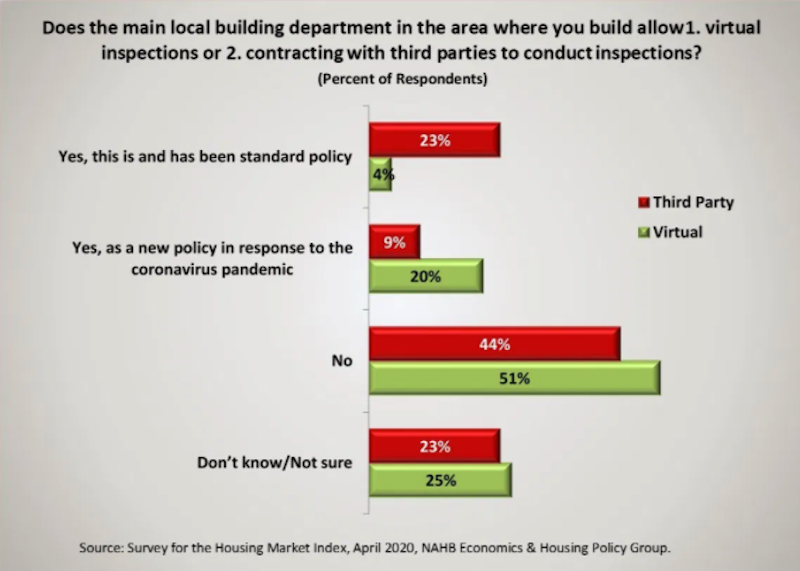
“We don't want to be a hindrance to our customers,” says Shahriar Amiri, chief building official and inspection services director for Arlington County, Va. “We need to help them keep projects moving.”
Amiri had been thinking about offering virtual inspections for a few years and had conducted a couple of test runs of an in-house solution in the months before COVID-19. But when his office was forced by the state to close on March 18, he launched the VBI service less than a week later for all required inspections.
The program uses a mix of relatively low-tech audio-video solutions, such as Microsoft Teams and Google Duo, to allow inspectors to work remotely and communicate effectively with contractors in the field.
In less than a month, Arlington County had conducted 4,000 virtual inspections—about half its normal workload in that time frame, but representing all requests given other factors that have slowed, delayed, or cancelled construction projects in its jurisdiction. “The response had been phenomenal,” says Amiri, and has enabled his crew to keep busy—and safe—without requiring third-party help.
Varying Levels of Technology in Virtual Inspections
By most accounts, Arlington’s VBI solution is common among municipalities, some of which have been offering some level of virtual inspections for years. “Some inspections are just too complex for virtual,” says Chad Nottingham, land use services coordinator for San Bernardino, Calif. “It’s up to the inspector to decide whether he can get adequate information to sign off [on an inspection].”
San Bernardino has offered VBIs since 2015, using Zoom, FaceTime, and similar solutions compatible with its back-office software platform to document and record permitting and approvals processes.
Even so, inspectors still travel to each jobsite to verify it matches the address on the permit, but they now stay outside to maintain social distancing while the contractor walks and talks through the area or system being inspected, a digital two-way show-and-tell.
While that’s comfortable for Nottingham and his team of inspectors, it’s not as thorough or interactive as VuSpex or Inspected.com, a more recent startup with similar capabilities. “Our solution has rigorous verification protocols to match a public record of an issued permit,” says Anthony Perera, inventor of Inspected.com and a Florida-based HVAC contractor.
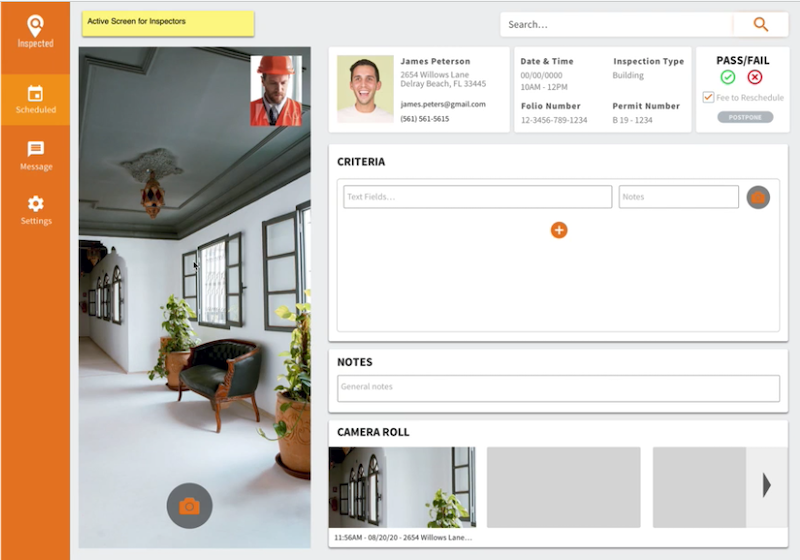
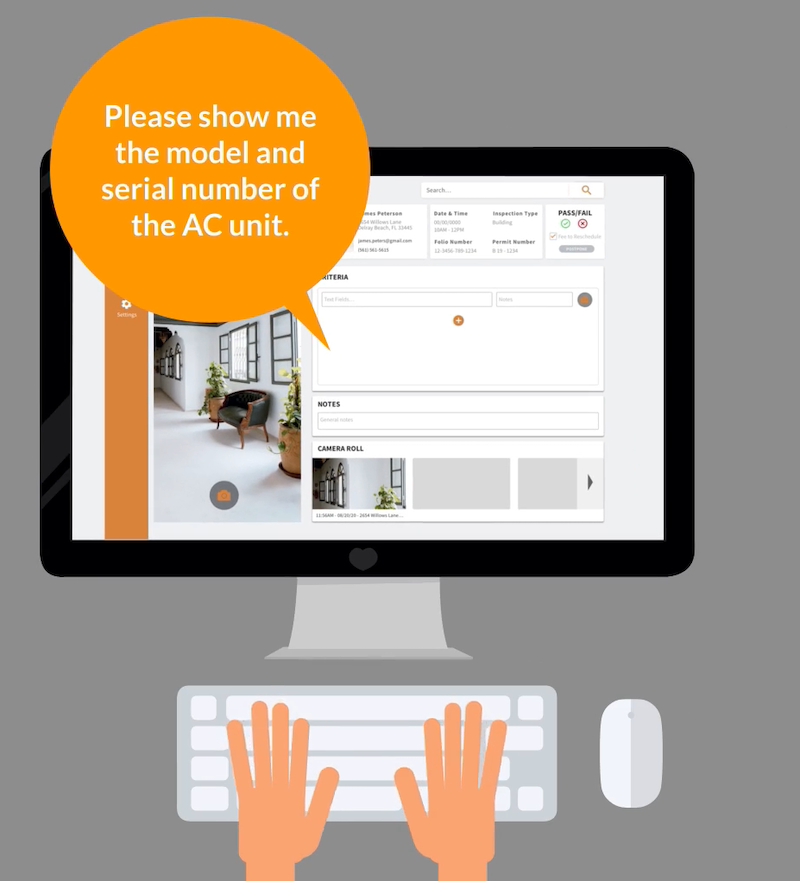
Both VuSpex and Inspected.com provide a more interactive solution that allows the inspector to snap still photos through the app and automatically download all of the inspection content to the project folder on the city’s server, among other features such as time-stamping.
The apps also eliminate the social-distancing requirements of an on-site visit by geolocating to an address, allowing inspectors to work remotely at the office or at home with assurance. “The program won’t even turn on [start an inspection] until it verifies the location,” Perera says.
Perera also extolls other virtues, such as savings in the time and costs of on-site inspections. “A typical inspector will go out on 15 to 20 inspections a day,” Perera says. With his solution, he says inspectors can do three times that volume without leaving the office and can save on transportation costs such as fuel, maintenance, and insurance. “The app is not just a note-taker, but a deep documentation process that enables a high level of liability protection and transparency.”
In Sonoma County, Calif., Rob Spaulding, building and safety division manager and deputy building official, implemented VuSpex in 2018 for simpler inspections. “We didn’t have a huge need for it then, and it was a process improvement for some inspectors,” he recalls. The app also links nicely to the Accela government software platform used by his and many other municipalities, reducing manual chores.
But after COVID-19 changed his world and that of his contractor customers, Spaulding rolled the app out to all inspections to keep work moving and to protect his people. “There's a learning curve, but we’ll get up to speed soon,” he says.
The Future of Virtual Inspections After Coronavirus
Spaulding says that once health-related restrictions are eased or lifted in his county, “We’ll decide which inspections should use VuSpex, but it probably won’t be all of them.”
Others are all in. “We’re not going back to in-person inspections,” says Amiri, who sees potential cost savings for both transportation (including a smaller vehicle fleet) and office expenses, as well as using the tech for employee recruitment and retention. “If I knew what was possible, I would have done this five years ago.”
